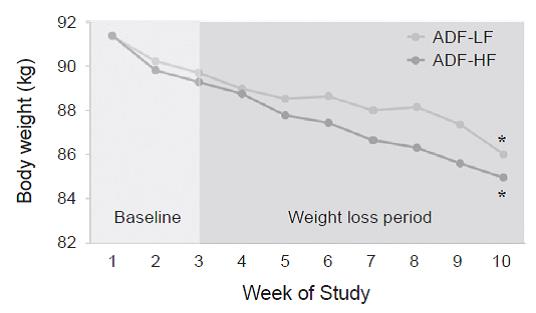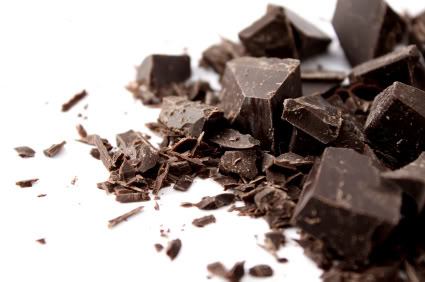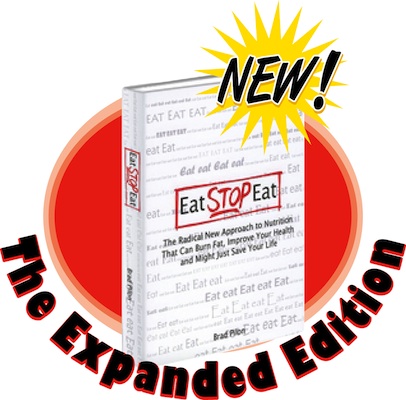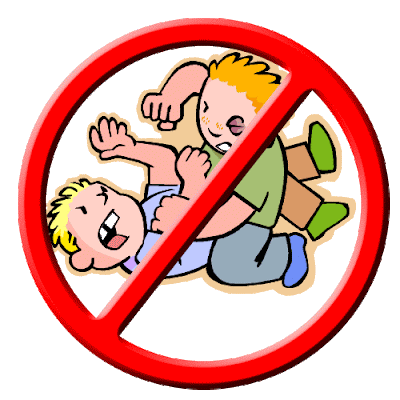In the two last posts I discussed the idea of gaining muscle and losing fat at the same time (
1) (
2). This post outlines one approach to make that happen, based on my own experience and that of several HCE (
3) users. This approach may well be the most natural from an evolutionary perspective.
But first let us address one important question:
Why
would anyone want to reach a certain body weight and keep it constant,
resorting to the more difficult and slow strategy of “turning fat into
muscle”, so to speak? One could simply keep on losing fat, without
losing or gaining muscle, until he or she reaches a very low body fat
percentage (e.g., a single-digit body fat percentage, for men). Then he
or she could go up from there, slowly putting on muscle.
The reason why it is advisable to reach a certain body weight and keep it constant is that,
below a certain weight, one is likely to run into nutrient deficiencies. Non-exercise energy expenditure is proportional to body weight.
As
you keep on losing body weight, calorie intake may become too low to
allow you to have a nutrient intake that is the minimum for your body
structure.
Unfortunately eating highly nutritious vegetables
or consuming copious amounts of vitamin and mineral supplements will
not work very well, because the nutritional needs of your body include
both micro- and macro-nutrients that need co-factors to be properly
absorbed and/or metabolized. One example is dietary fat, which is
necessary for the absorption of fat-soluble vitamins.
If
you place yourself into a state of nutrient deficiency, your body will
compensate by mounting a multipronged defense, resorting to
psychological and physiological mechanisms. Your body will do that
because it is hardwired for self-preservation; as noted below, being in a
state of nutrient deficiency for too long is very dangerous for one's
health. Most people cannot oppose this body reaction by willpower
alone. That is where binge-eating often starts. This is one of the key
reasons why looking for a common denominator of most diets leads to the
conclusion that all succeed at first, and eventually fail (
4).
If
you are one of the few who can oppose the body’s reaction, and
maintain a very low calorie intake even in the face of nutrient
deficiencies, chances are you will become much more vulnerable to
diseases caused by pathogens. Individually you will be placing yourself
in a state that is similar to that of populations that have faced
famine in the past. Historically speaking, famines are associated with
decreases in degenerative diseases, and increases in diseases caused by
pathogens. Pandemics, like the Black Death (
5), have historically been preceded by periods of food scarcity.
The
approach to gaining muscle and losing fat at the same time, outlined
here, relies mainly on the following elements: (a) regularly conducting
strength training; (b) varying calorie intake based on exercise; and
(c) eating protein regularly. To that, I would add becoming more active,
which does not necessarily mean exercising but does mean doing things
that involve physical motion of some kind (e.g., walking, climbing
stairs, moving things around), to the tune of 1 hour or more every day.
These increase calorie expenditure, enabling a slightly higher calorie
intake while maintaining the same weight, and thus more nutrients on a
diet of unprocessed foods. In fact, even things like fidgeting count (
6). These activities should not cause muscle damage to the point of preventing recovery from strength training.
As
far as strength training goes, the main idea, as discussed in the
previous post, is to regularly hit the super-compensation window, with
progressive overload, and maintain your current body weight. In fact,
over time, as muscle gain progresses, you will probably want to increase
your calorie intake to increase your body weight, but very slowly to
keep any fat gain from happening. This way your body fat percentage will
go down, even as your weight goes up slowly. The first element,
regularly hitting the supercompensation window, was discussed in a
previous post (
7).
Varying calorie intake based on exercise.
Here one approach that seems to work well is to eat more in the hours
after a strength training session, and less in the hours preceding the
next strength training session, keeping the calorie intake at
maintenance over a week. Individual customization here is very
important. Many people will respond quite well to a calorie surplus
window of 8 – 24 h after exercise, and a calorie deficit in the
following 40 – 24 h. This assumes that strength training sessions take
place every other day. The weekend break in routine is a good one, as
well as other random variations (e.g., random fasts), as the body tends
to adapt to anything over time (
8).
One
example would be someone following a two-day cycle where on the first
day he or she would do strength training, and eat the following to
satisfaction: muscle meats, fatty seafood (e.g., salmon), cheese, eggs,
fruits, and starchy tubers (e.g., sweet potato). On the second day, a
rest day, the person would eat the following, to near satisfaction,
limiting portions a bit to offset the calorie surplus of the previous
day: organ meats (e.g., heart and liver), lean seafood (e.g., shrimp and
mussels), and non-starchy nutritious vegetables (e.g., spinach and
cabbage). This would lead to periodic glycogen depletion, and also to
unsettling water-weight variations; these can softened a bit, if they
are bothering, by adding a small amount of fruit and/or starchy foods on
rest days.
Organ meats, lean seafood, and non-starchy
nutritious vegetables are all low-calorie foods. So restricting
calories with them is relatively easy, without the need to reduce the
volume of food eaten that much. If maintenance is achieved at around
2,000 calories per day, a possible calorie intake pattern would be
3,000 calories on one day, mostly after strength training, and 1,000
calories the next. This of course would depend on a number of factors
including body size and nonexercise thermogenesis. A few calories could
be added or removed here and there to make up for a different calorie
intake during the weekend.
Some people believe that, if
you vary your calorie intake in this way, the calorie deficit period
will lead to muscle loss. This is the rationale behind the multiple
balanced meals a day approach; which also works, and is successfully
used by many bodybuilders, such as Doug Miller (
9) and Scooby (
10).
However, it seems that the positive nitrogen balance stimulus caused
by strength training leads to a variation in nitrogen balance that is
nonlinear and also different from the stimulus to muscle gain. Being in
positive or neutral nitrogen balance is not the same as gaining muscle
mass, although the two should be very highly correlated. While the
muscle gain window may close relatively quickly after the strength
training session, the window in which nitrogen balance is positive or
neutral may remain open for much longer, even in the face of a calorie
deficit during part of it. This difference in nonlinear response is
illustrated through the schematic graph below.
Eating protein regularly.
Here what seems to be the most advisable approach is to eat protein
throughout, in amounts that make you feel good. (Yes, you should rely
on sense of well being as a measure as well.) There is no need for
overconsumption of protein, as one does not need much to be in nitrogen
balance when doing strength training. For someone weighing 200 lbs (91
kg) about 109 g/d of high-quality protein would be an overestimation (
11) because strength training itself pushes one’s nitrogen balance into positive territory (
12).
The amount of carbohydrate needed depends on the amount of glycogen
depleted through exercise and the amount of protein consumed. The two
chief sources for glycogen replenishment, in muscle and liver, are
protein and carbohydrate – with the latter being much more efficient if
you are not insulin resistant.
How much dietary protein can you store in muscle? About 15 g/d if you are a gifted bodybuilder (
13).
Still, consumption of protein stimulates muscle growth through complex
processes. And protein does not usually become fat if one is in
calorie deficit, particularly if consumption of carbohydrates is
limited (
14).
The
above is probably much easier to understand than to implement in
practice, because it requires a lot of customization. It seems natural
because our Paleolithic ancestors probably consumed more calories after
hunting-gathering activities (i.e., exercise), and fewer calories
before those activities. Our body seems to respond quite well to
alternate day calorie restriction (
15).
Moreover, the break in routine every other day, and the delayed but
certain satisfaction provided by the higher calorie intake on exercise
days, can serve as powerful motivators.
The temptation to set rigid rules, or a generic formula, always exists. But each person is unique (
16).
For some people, adopting various windows of fasting (usually in the 8
– 24 h range) seems to be a very good strategy to achieve calorie
deficits while maintaining a positive or neutral nitrogen balance.
For
others, fasting has the opposite effect, perhaps due to an abnormal
increase in cortisol levels. This is particularly true for fasting
windows of 12 – 24 h or more. If regularly fasting within this range
stresses you out, as opposed to “liberating” you (
17), you may be in the category that does better with more frequently meals.






 I may very well be the only person in the world with this type of experience, and it is this experience that makes Eat Stop Eat so unique, and so unlike any other nutrition book in existence.
I may very well be the only person in the world with this type of experience, and it is this experience that makes Eat Stop Eat so unique, and so unlike any other nutrition book in existence.



 I promised myself that I wouldn’t take it upon myself to DEFEND intermittent fasting…mostly because I do not see that as my role.
I promised myself that I wouldn’t take it upon myself to DEFEND intermittent fasting…mostly because I do not see that as my role.